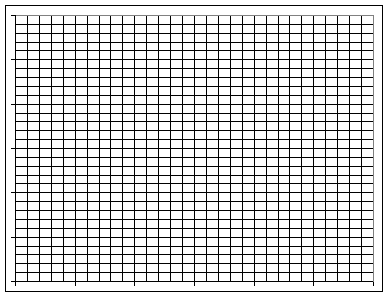
class 050829
From your data find the clock times at which each of the given depths were observed and make a table of depth vs. clock time, according to a clock which started at t = 0 when the water hit the first mark. The depth at the first mark is 90 cm, and every mark is 10 cm below the last.
| my clock time | depth |
| 0 | 90 |
| 3.6 | 80 |
| 7 | 70 * |
| 60 | |
| 14 | 50 * |
| 40 | |
| 25 | 30 * |
| 20 | |
| 10 | |
Does the depth change more and more quickly or more and more slowly with increasing clock time? Why do you say so?
Graph depth vs. clock time, remembering that the order y vs. x puts y on the vertical and x on the horizontal axis.

What is the evidence from your graph that depth changes either more and more quickly, or more and more slowly with increasing clock time?
Are the slopes of your graph positive or negative?
Does the slope of your graph increase or decrease with increasing time?
Theoretically, the exit velocity of the water from the hole should be proportional to the square root of the inside pressure at that point. Physics and differential equations tell us that under these conditions the function describing the depth y vs. clock time t should be quadratic in nature, having the form y = a t^2 + b t + c for certain specific and fixed values of the parameters a, b and c. You aren't expected to understand all that, but you can focus on the following:
Now substitute the y and t values of the fourth data point. What is your equation?
Finally substitute the y and t values of the sixth data point. What is your equation?
You have three equations in three unknowns. What are the unknown variables?
Subtract your first equation from your second. What do you get?
Subtract your first equation from the third. What do you get?
You just obtained two new equations and eliminated one of your variables. Which variable did you eliminate, and what are your two equations?
How could you eliminate a variable from these two equations? Which of the variables would you rather eliminate and why?
See also matching basic graphs.